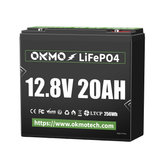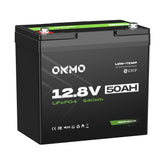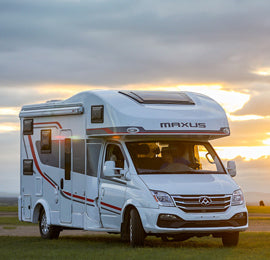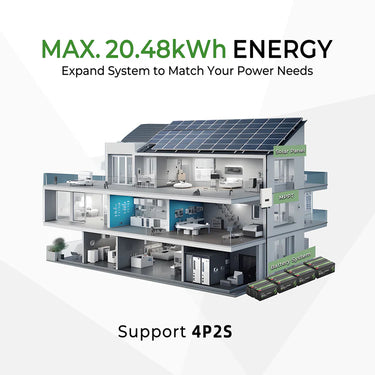Does Your Solar Battery Really Need a Charger?

When people hear the term "solar battery charger," a common question arises: Don't solar batteries charge from the sun? Why would they need a dedicated "charger"? This is an excellent question and gets to the heart of understanding how solar power systems work. This article will clarify this concept and explain how to correctly charge your solar battery.
I. Core Concept: What Exactly is a "Solar Battery Charger"?
First, let's give a clear answer: Yes, solar batteries typically require a "charger," but this device is not a simple adapter like the one used for charging a phone.
In a solar power system, the "solar battery charger" is more accurately an "energy manager and regulator." Its primary role is not to directly provide power, but to intelligently manage the flow of electricity from the solar panels to the battery.
Its formal name is usually Solar Charge Controller or simply Solar Regulator. You can think of it as the "smart traffic cop" of the entire system.
 II. Why is a Charge Controller Essential for Solar Batteries?
II. Why is a Charge Controller Essential for Solar Batteries?
Connecting solar panels directly to a battery is a common mistake that can significantly damage or even destroy your battery. Here's why:
-
Overcharge Protection: Under strong sunlight, solar panels can generate excessively high voltage and current. Without a controller to regulate this, continuous overcharging causes uncontrolled internal chemical reactions in the battery, leading to gassing, swelling, leakage, and even thermal runaway. This is fatal for lead-acid batteries and severely shortens the lifespan of lithium batteries.
-
Over-Discharge Protection: When a battery is depleted, if loads (like lights, fridges) continue to draw power, the battery will over-discharge. For lithium batteries, over-discharge causes the voltage to drop too low, damaging the internal chemistry and causing permanent, irreversible capacity loss. The controller monitors the battery voltage in real-time and automatically cuts off the output when the voltage is too low, protecting the battery.
-
Optimized Charging Process: Modern, advanced MPPT controllers can intelligently track the Maximum Power Point of the solar panels, converting the panel's variable voltage and current into the optimal voltage and current for charging the battery. This significantly improves charging efficiency, capturing up to 30% more solar energy compared to non-MPPT systems, especially in low-light or variable weather conditions.
-
Multi-Stage Charging: Professional controllers provide the most scientific charging curve for the battery, typically including Bulk, Absorption, and Float stages. This ensures the battery is charged quickly and then maintained with a tiny trickle current once full, preventing water loss and extending its service life.
 III. How to Choose the Right "Charger" for Your Solar Battery
III. How to Choose the Right "Charger" for Your Solar Battery
Selecting a solar charge controller primarily depends on two key factors:
-
Battery Type Compatibility: Ensure the controller supports your battery's chemistry. The most common types are Lithium Iron Phosphate (LiFePO4) and Lead-Acid batteries. Their charging voltages and algorithms are completely different. A high-quality controller will allow you to select the battery type from its menu.
-
Technology Type and Specifications:
-
PWM vs. MPPT:
-
PWM Controllers: Lower cost, suitable for small systems where the solar panel voltage is close to the battery voltage.
-
MPPT Controllers: Higher efficiency, superior performance. Especially when the solar panel voltage is significantly higher than the battery voltage (e.g., using 36V or 72V panels to charge a 12V or 24V battery), it "squeezes" every bit of power from the sunlight, making it the preferred choice for most home and off-grid systems.
-
-
System Voltage Match: The controller's rated voltage must match your battery bank voltage (e.g., 12V, 24V, 48V).
-
Current and Power Capacity: The controller's rated input current must be greater than the short-circuit current of your solar panel array. A simple calculation is: Total Solar Panel Power / Battery Voltage ≈ Charging Current. The controller's rated current should be slightly higher than this calculated value.
-
 IV. Building an Efficient and Reliable Home Energy Storage System
IV. Building an Efficient and Reliable Home Energy Storage System
Understanding the core role of the "solar battery charger" makes building a system clear: Solar Panels → Solar Charge Controller → Battery → Inverter → Home Appliances.
In this chain, the battery is the core warehouse of energy, and its quality directly determines the system's runtime and lifespan. A high-quality battery should offer high safety, long cycle life, and stable performance.
For instance, for users planning a DIY or small off-grid system, choosing a lithium battery like the OKMO 12V 400Ah LiFePO4 with its built-in smart BMS is a very wise decision.
-
Built-in Smart BMS: It provides top-level cell protection, including overcharge, over-discharge, overcurrent, short-circuit, and temperature protection. This creates a dual safety net with the external solar charge controller, making the system exceptionally safe.
-
Exceptional Performance: With a massive capacity of 5120Wh, it can meet the long-term power needs of various scenarios such as home emergency backup, RV travel, and outdoor work.
-
Plug-and-Play: Its user-friendly design simplifies installation. You can easily parallel multiple such batteries to expand capacity, building a powerful 48V home power station.
Therefore, when you search for "solar battery charger," what you truly need is a complete solution for safely and efficiently charging your battery, not just a single device. The core of this solution is the perfect pairing of a solar charge controller and a high-quality, safe battery.
Investing in an excellent MPPT controller and a reliable, BMS-equipped LiFePO4 battery like the OKMO 12V 400Ah means investing in an efficient, safe, clean energy system that will serve you for years to come.









